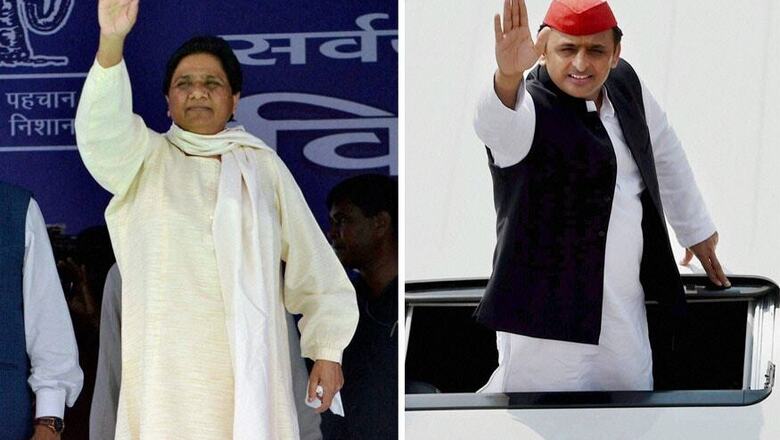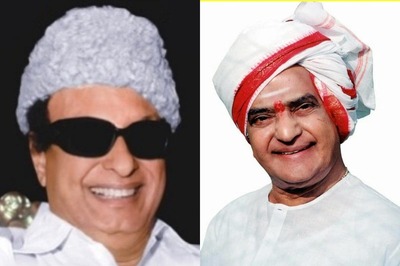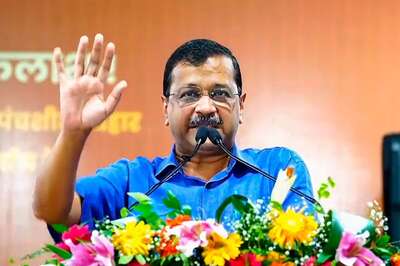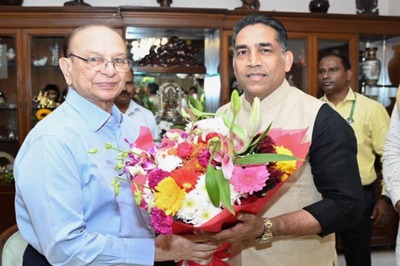
views
Lucknow: Almost a month-long polling schedule, voting in seven phases, diverse socio-political and demographic realities, and more than 14 crore voters. Elections in UP have always been with a difference. But it is this difference that also brings out the war of perception. Perceptions of 'losing steam' and 'gaining momentum' of a party with each passing phase.
Starting from western UP, moving through Rohelkhand, central UP and then Bundelkhand; as elections move east with three phases of voting still to take place, perceptions are being constantly made and broken. And in a scenario of a clear triangular fight between the BJP, BSP, and SP-Congress alliance, it's this perception that can make a crucial difference.
Leaders, therefore, get more aggressive, and more desperate in their statements. Strategies are being revisited, reinvented or discarded to keep perception in their favour. As a senior BJP leader says, "Election is also about perception and mind games. And we address it quiet seriously." In an election where there is no clear favourite and most of the 403 seats are seeing a triangular fight, it's the perception which can get the crucial swing.
This is how the parties are stacked in this war of perception:
BJP
1. House in Order: Even before the elections were announced, the Bharatiya Janata Party had successfully put its house in order. Organisational changes and leadership projections were done keeping the caste calculations in mind. A broad strategy basically targeting the non-Yadav OBC, non-Jatav Dalits and upper caste vote banks was rolled out and implemented well. Riding high on its spectacular success in the 2014 Lok Sabha polls, the party was successful in projecting itself as the strong claiment for political power in UP. The strong narrative of the 'BJP vs Others' was built.
2. Brand Modi Well Entrenched: After elections were notified, Prime Minister Narendra Modi may not have bombarded the state with rallies like he did in Bihar. While the PM is addressing just two rallies in each phase, the Modi connect was already made with 12 big rallies across Uttar Pradesh in 2016 itself. These rallies started with Saharanpur and concluded with a massive parivartan rally in Lucknow on January 2, just before the poll dates were announced. The strategy has worked well.
3. Ticket Trouble: It was the ticket distribution which raised concerns about BJP' s poll prospects. Tickets to many outsiders triggered a lot of resentment and a series of protests. The party tried hard to control the damage. However, as elections gained pace, the issue was adequately dealt with by the BJP leadership.
4. Jat Equation: The biggest challenge came to the BJP with the Jat equation being disturbed before the first phase of polls in western UP. Party chief Amit Shah had to step in, but the damage was done. The perception created was that the 'BJP suffers losses in western UP because of Jat anger'. A senior leader of the BJP accepts it was a "big challenge". "After phase 1, perception was built against the BJP. The concern to firefight was evident with Amit Shah himself rushing to Lucknow, addressing a press conference and claiming 50 plus seats for the party in the first phase."
5. Different Targets: The BJP was quick to revisit its strategy after phase 1. The strategy adopted was to divide non-BJP votebank and galvanise party support. So, while the BJP claimed the fight was against the BSP in phase 2, it was Samajwadi Party-Congress in phase 3 and BSP again in phase 4. The strategy was to weaken the real challenger by pitting one against the other. The strategy paid off.
SAMAJWADI PARTY
1. Alliance Masterstroke: From being simply written-off following its internal bickering and power struggle, the Akhilesh Yadav-led Samajwadi Party bounced back with a last-minute alliance with the Congress. As a senior SP leader says, "In politics, 2+2 is not always 4. It can also be 22." The alliance built an instant perception for both the SP and the Congress. It emerged as a strong contender for the minority votebank.
2. Target Modi: While on ground it might have been SP vs BSP on several seats, the alliance leader continued to have a larger focus on Modi. The strategy was to pit the alliance as the biggest opponent to the BJP and Modi, and thereby attract the minority voter. As the election progresses, this is only intensifying, even stooping down to levels of 'donkey jibes'. The SP-Congress alliance was thus creating a strong perception in its favour, especially in phases 2 and 3.
3. Seat-sharing Disputes Play Spoilsport: The alliance did lose some sheen thanks to seat-sharing disputes. The fact that four seats in Congress bastions of Amethi-Raibareli had both Samajwadi Party and Congress candidates raised doubts about the longetivity of the alliance
4. Priyanka Gandhi's absence from campaigning, Sonia Gandhi's appeal to vote for the Congress without mentioning the alliance, questions being raised by leader Raghuraj Pratap aka Raja Bhaiya built a negitive perception around the alliance. The parties are still battling this perception with just three phases left to go.
BSP
1. The Dalit-Muslim Outreach: For the BSP, the build-up to elections started on a high note with an ambitious Dalit-Muslim outreach. With 100 of the 403 tickets to Muslims, the party seemed to be the strongest claimant to the power seat in UP. However the SP-Congress alliance came as a setback. The perception created was that the BSP's core strategy this time had been disturbed. After four phases, the party has been unable to fight off this perception entirely.
2. Law and Order: One advantage the BSP still has is Mayawati's better track record of governance and maintaining law and order. Though this advantage was slightly endangered by the induction of jailed politician Mukhtar Ansari, the BSP had been successful in keeping up its USP.
3. Dalit Votes Intact: Despite all challenges, the perception holds that Mayawati has a strong control over her core Dalit votebank. This perception has helped her ward off the exodus of minority support in favour of the SP-Congress alliance. The BSP still continues to be a strong attraction for minority voters.
4. Lone Leader Challenge: This is the BSP's biggest drawback. As the election progresses, the BJP has bombarded the state with rallies by several big leaders. Attacks on rivals have intensified and are being unleashed simultaneously from different areas. While the SP-Congress alliance has tried to match up with the BJP's fire power through Akhilesh, Rahul and other senior leaders, for the BSP it's Mayawati, the lone general out in the field.
It, however, is still not the end of the road for building and demolishing perceptions around these three competitors. At the end of phase 4, however, it's the BJP which leads the ground with the stronger ones. It remains a triangular fight where many seats are too close to call. Will perceptions work? We'll know on March 11.




















Comments
0 comment